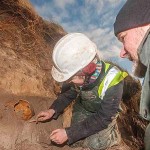

Environmental archaeology centre in Orkney to be created

A world-class centre for environmental archaeology is to be established in Orkney, after £1.6million of funding was secured.
The facility will include specialist environmental archaeology laboratories, allowing the scientific study of plant and animal remains, together with ancient soils and sediments fundamental to understanding the past.
It will also host new imaging equipment for creating digital records of archaeological artefacts.
Although based in Orkney, the centre will enable partners, visiting researchers, museums, commercial units, community groups, and UHI students access to a central research hub.
Professor Ingrid Mainland, of the UHI Archaeology Institute, said Orkney-based environmental research “has true potential for global reach.”
There will be no capital construction works, instead work will be focused on re-aligning existing spaces to create the centre, within UHI Orkney.
The Archaeology and Environment Science (AEonS) project is in partnership with Orkney Museums, Historic Environment Scotland (HES), Glasgow University, Archaeology Scotland, the Scotland’s Coastal Archaeology and the Problem of Erosion (SCAPE) Team based at St Andrew’s University, and the University of Southampton.
Professor Mainland said: “Unfortunately, across the UK expertise and facilities for environmental archaeology research are diminishing.
”Gaps in capacity are emerging at national and regional scales particularly in specialisms, such as soil science, zooarchaeology and archaeobotany, which may lead to generational gaps in these specialisms and a national inability to take such research forward in the future.
“The AEonS facility and partnership has been established to meet these needs and ensure that skills gaps and shortages are met to provide a sustainable future for Scotland in Environmental Archaeology.”
AEonS is part of the Research Infrastructure for Conservation and Heritage Science (RICHeS) programme, funded by the UKRI Arts and Humanities Research Council through the UKRI Infrastructure Fund.